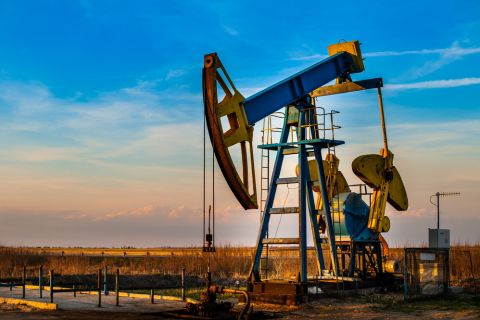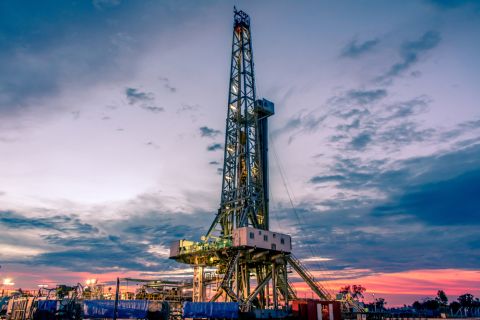When Russian oil and gas executives talk, invariably the same concern comes up. Access to export markets is a matter of life or death, they say, notably for the federation's small and midsize companies. In 2002, out of total production of 380 million tons, the Russian federation exported 173.5 million tons (up from 147.9 million tons the previous year). It also exported 74.6 million tons of refined products (up from 70.4 in 2001). Gas exports totaled 167.9 million cubic meters, again registering an increase year on year. Despite restrictions on exports due to a long-standing quota arrangement, Russia's oil producers have sought to maximize their foreign sales by whatever means possible. The large discrepancy between the price of crude on export markets and its domestic price, added to the hard currency payments received for exports, are incentives to increase international sales-thus the need for more pipeline capacity. Yet, Russia faces major infrastructure deficiencies. In the words of Mikhail Khodorkovskiy, Yukos chief executive officer, "The first blow to transport capacity is when we reach 300 million tons of yearly production and hit the pipeline system's throughput limits. The barriers are closing down on us at 450 million tonnes, which is when we really reach the ceiling. "Considering overall onshore reserves of 20 billion tons, normal production levels should stand at around 450- to 500 million tonnes per year, to be in a position where the level of amortization of infrastructure investment is satisfactory. At the current rate of production increase, we will reach this level by 2005, but we will not have the necessary infrastructure to transport the oil. It seems therefore unreasonable to continue with further hikes in production." Busy lines Russia's oil lifeline is Transneft, a monopoly pipeline that transports 93% of the country's crude oil production. Established in 1993 to replace the Soviet Union's Glavtransneft, it controls 48,160 kilometers of long-distance pipelines (the world's largest). Transneft has a sister company, Transnefteprodukt and its 19,300 kilometers of pipeline links to Russia's 13 biggest refineries. It carries refined products to Ukraine, Hungary, Poland, Latvia, Kazakhstan and three Russian ports: Tuapse, Novorossiysk and St. Petersburg. Transneft is a state within the state that accounts for three-quarters of the country's exported oil. Monthly Transneft exports average 2.5- to 3 millions barrels per day. It also carries large transit volumes of crude from Kazakhstan and Azerbaijan, which account for an average of 12% of exported volumes. These exports follow different routes: the main pipe routes are the well-known Druzhba (friendship) pipeline, connecting Russia to central and eastern Europe through a northern and a southern route (Poland, Ukraine, Belarus, Slovakia, Hungary and the Czech Republic), all the way to Germany. An alternate route goes to the Black Sea port of Novorossiysk, Russia's principle oil port, which also happens to be the outlet of one of the federation's minor alternative pipelines, the Kazakhstan-Russia Caspian Pipeline, run by the Caspian Pipeline Consortium (CPC). CPC consists of a 50% stake by Russia, Kazakhstan and Oman, and 50% by a coalition consisting of ChevronTexaco (15%), the Lukarco joint venture of Lukoil and BP (12.5%), Rosneft-Shell, ExxonMobil, ENI, BG, Kazakhstan Pipeline ventures and Kerr-McGee. Opened in December 2001, the 1,510-kilometer pipeline connecting Kazakhstan's Tengiz Field to Novorossiysk cost $2.6 billion to construct-twice the original estimate. It has an initial capacity of about 566,000 barrels per day. The eventual throughput capacity could be doubled to 1,334 million barrels per day, of which 15 million will be crude of Russian origin. Eventually alternative connection routes may be used to avoid the Bosphorus Strait bottleneck (Novorossiysk is the starting point for shipments through the strait towards the Mediterranean Sea). The strait has a 150,000-ton limit for shipment transit allowances. The lack of VLCC (very large crude carrier) capacity will surely be a major handicap when the long-awaited and delayed Baku-Tbilisi-Ceyhan (BTC) pipeline will come onstream, which is expected to be around 2005. This will connect the Azeri oil fields with the Turkish port of Ceyhan, which is VLCC-capable and therefore opens the way to straight crude shipments to the U.S.-a key competitive advantage when compared with other, existing outlets. Ian MacDonald, CPC general director, doesn't see much trouble there. "The limits on Bosphorus-Dardanelles navigation to 150,000-ton ships is making it less competitive, but CPC is operating on the market with good credentials. In fact, recently, we have had one shipment that double-loaded a VLCC in the Mediterranean, bound to North America. Also, increasing volumes of CPC are going to the Far East." Golden egg conveyor Through its law on natural monopolies and the associated antimonopoly legislation, the Russian government has promoted equal access to the Transneft system, according to allowances based on production levels, which are reviewed every quarter. This was welcomed by independent players, while the majors were looking at ways of barring them from access to the main export route. CPC's quality bank system-where a basket of 11 crudes are allowed on the system-is currently being considered for implementation for the Transneft network too, and has already received a favorable nod from the government. This would be a convenient way to keep away small producers of low-grade crudes for which the cost of treatment would be prohibitive. Such a decision, without a fiscal incentive associated with it, would be a death-blow for many of them, making the lack of refining capacity access for independents all the more acute. "We are monitoring the situation carefully and we hope that this project won't go through without considering the small and medium-range companies' opinion and recommendations on this point," emphasizes Nobel Oil's Grigory Gurevich. Transneft's predominance in the Russian oil and gas infrastructure is strengthened by its control over some of the key outlets at the end of the pipelines. The northern port of Primorsk, commissioned in December 2001, is one of Russia's newly revamped export doors, to replace Russia's only deepwater seaport at Novorossiysk, which, on top of being limited by trans-Bosphorus restrictions, goes through a storm season every winter, creating a 2- to 4-million-ton glut in the already oversupplied domestic crude market. Primorsk's connection to Transneft's Baltic Pipeline System (BPS), which was opened in December 2001 with a throughput of 12 million tons per year, is turning it into a new viable export route, handling tankers of up to 150,000 tons, primarily aimed at European markets. Another port has been at the heart of a heated saga in recent months. Once the Soviet Union's major outlet, Latvia's Baltic sea port of Ventspils had its crude delivery (315,000 tons per day) shut down by Transneft, the latter arguing that the pipeline would need $143 million of investments for revamping. This claim, and the subsequent shut-down of the pipeline, has offered a way for Transneft to put tremendous pressure on Ventspils' operator, Ventspils Nafta Oil, to force it to sell off a 25% stake in the company. With an export capacity of 16 million metric tons of crude and 12 million tons of refined products, Ventspils is a key export route, and its shut-down was bitterly felt by Russia's oil producers. The message sent by Transneft to the Russian companies and to the Latvian operator was clear enough-Transneft has to be reckoned with as the country's major door into foreign markets. Unity vs. deadlock? Two mega-projects on the planning table have stirred up considerable passion, some controversy and much interest from the oil community worldwide. The first project is driven by a coalition of the country's leading oil producers and exporters: Lukoil, Yukos, TNK, Sibneft and Surgutneftegas, which propose a pipeline from western Siberia, with two possible routes: one of 3,600 kilometers around the White Sea; the second of 2,500 kilometers running straight across the White Sea, all the way to the Arctic port of Murmansk, where a VLCC-capable port would considerably boost Russian export capacities. Despite the statement by the Russian government that any new pipeline infrastructure to be built in the federation will be state-controlled, the project is likely to go ahead considering the production expansion plans of Russian majors. Their production is already hitting the infrastructure limits of existing export routes. The commissioning of the Murmansk arctic port could be under way as soon as 2007, featuring offshore mooring points to handle large crude cargoes. The final capacity of Murmansk for exports is expected to reach 584 million barrels of oil annually shipped to western Europe and the U.S. "This project is regarded as potentially closed to independent producers' volumes, but nevertheless has a potential source of benefits for them," explains Alexander Samusev, Severnaya Neft general director. "It is a club project and it is clear that we cannot join it at this time." The second project is actually a set of two competing projects, both dedicated to pumping crude to Asia. From the existing pipeline already feeding the eastern Siberian town of Angarsk and its large refinery, two alternative schemes have been designed. One, proposed by Yukos, would drive 2,400 kilometers into China's industrial Northeast, ending up at Daqing at a proposed cost of $1.9 billion. The second, nurtured by the unavoidable Transneft, proposes to lay in 3,700 kilometers of pipe, to create what would be one of the longest pipelines in the world. The line would cut south into the most southern parts of the Russian Pacific coast, to the port of Nakhodka, where oil shipments could set off towards Japan, South Korea and the U.S. west coast. These two costly projects, once opposed, have now been given the go-ahead. They will position Russia at the center of the global oil picture, while allowing the development of the untamed, still widely unexplored Eastern Siberian Basin.
Recommended Reading
CERAWeek: Human Oversight, Machine Power: AI’s Future in Energy
2024-03-22 - A CERAWeek panel tackles how AI's hunger for complexity can devour the energy industry's toughest challenges.
Schneider Electric’s Heather Cykoski: Infused AI is Everywhere
2024-04-09 - Schneider Electric puts sensors in the technology it provides customers, creating the ability to gather data, predict operations and drive efficiency.
‘Growth Story’ for Oil: Rice's Kenneth Medlock on Demand Trends
2024-03-05 - Economics drive oil demand, not politics, Rice University’s Kenneth Medlock said during the International Drilling Conference and Exhibition in Galveston.
Chevron Exec: Shale Still in ‘Early Days’ of Recovery Potential
2024-03-08 - From innovation to shale well recovery rates, executives at Chevron, SLB, Helmerich & Payne and Transocean see a lot more work ahead.
NAPE: CCUS is a Risky Venture Hinging on Tech, Regulation, Reservoirs
2024-02-14 - Transdisciplinary collaboration and reservoir understanding are key to mitigating CCUS risks.





